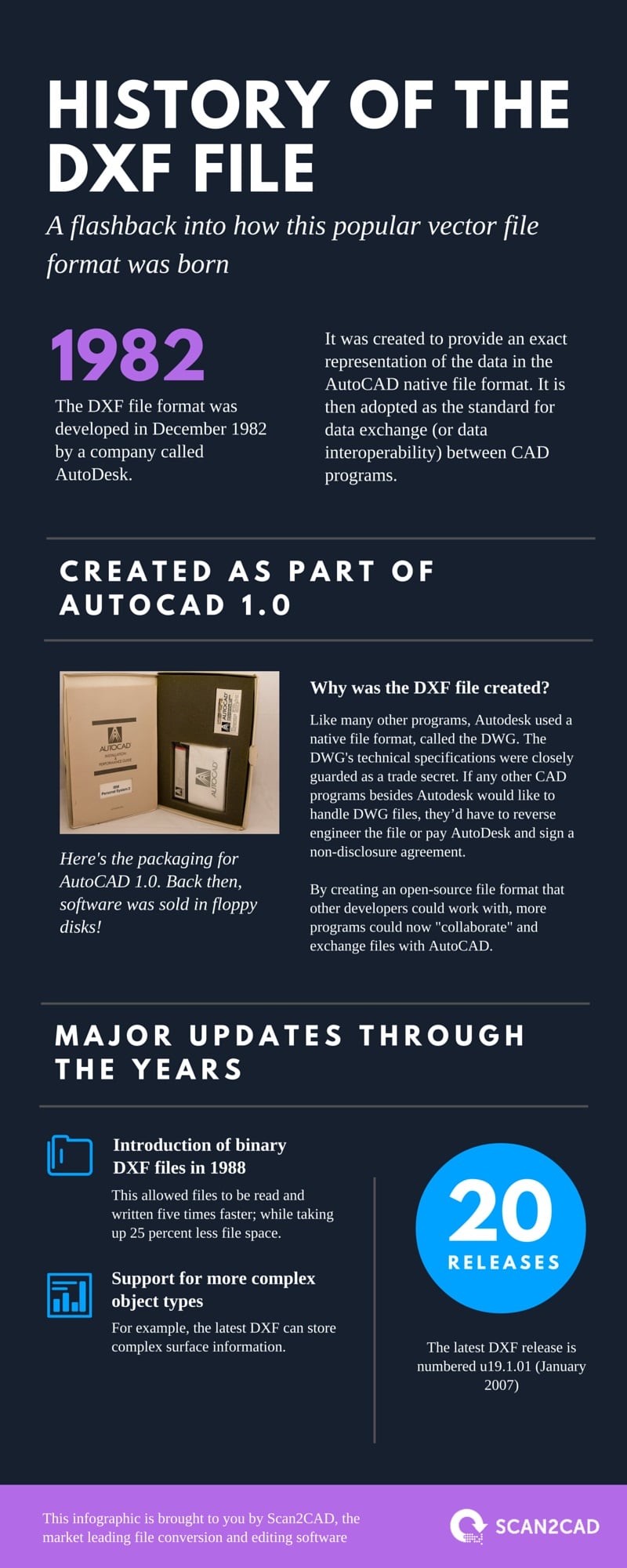Do you know that the DXF format has been around for 33 years? Back then, .jpg and .gifs had not even existed! AutoCAD was only just introduced to the world. Those old folks used 360Kb floppy disks and $40,000 computers. Despite that, the inventors had thought through the file format so well. The DXF file format is adopted as the industry standard for CAD software and the file structure is still in use today. Here’s a quick flashback at when and why the DXF file was invented.

And now you can spout the history of DXF!
Transcript of the content:
The DXF file format was developed in December 1982 by a company called AutoDesk. It was created to provide an exact representation of the data in the AutoCAD native file format. It is then adopted as the standard for data exchange (or data interoperability) between CAD programs.
Why was the DXF File created
Like many other programs, AutoDesk used a native file format, called the DWG. The DWG’s technical specifications were closely guarded as a trade secret. If any other CAD program besides AutoDesk would like to handle DWG files, they’d have to reverse engineer the file or pay AutoDesk and sign a non-disclosure agreement.
By creating an open-source file format that other developers could work with, more programs could now “collaborate” and exchange files with AutoCAD.
Major updates through the years
- Introduction of binary DXF files in 1988. This allowed files to be read and written five times faster; while taking up 25 percent less file space.
- Support for more complex object types. For example, the latest DXF can store complex surface information.
There has been 20 releases of the DXF file specification. The latest DXF release is numbered u19.1.01 (January 2007).

